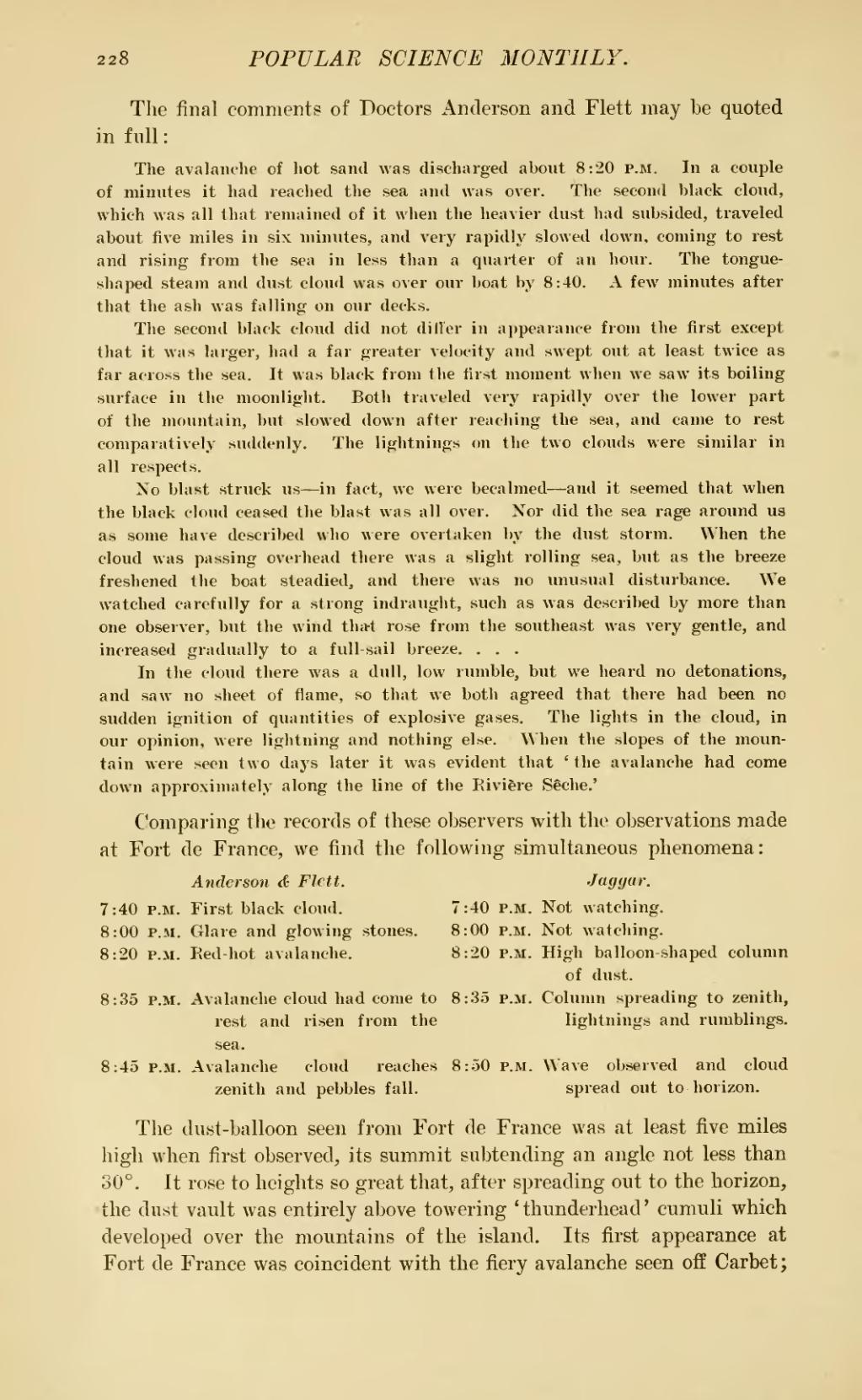The final comments of Doctors Anderson and Flett may be quoted in full:
The second black cloud did not differ in appearance from the first except that it was larger, had a far greater velocity and swept out at least twice as far across the sea. It was black from the first moment when we saw its boiling surface in the moonlight. Both traveled very rapidly over the lower part of the mountain, but slowed down after reaching the sea, and came to rest comparatively suddenly. The lightnings on the two clouds were similar in all respects.
No blast struck us—in fact, we were becalmed—and it seemed that when the black cloud ceased the blast was all over. Nor did the sea rage around us as some have described who were overtaken by the dust storm. When the cloud was passing overhead there was a slight rolling sea, but as the breeze freshened the boat steadied, and there was no unusual disturbance. We watched carefully for a strong indraught, such as was described by more than one observer, but the wind that rose from the southeast was very gentle, and increased gradually to a full-sail breeze. . . .
In the cloud there was a dull, low rumble, but we heard no detonations, and saw no sheet of flame, so that we both agreed that there had been no sudden ignition of quantities of explosive gases. The lights in the cloud, in our opinion, were lightning and nothing else. When the slopes of the mountain were seen two days later it was evident that 'the avalanche had come down approximately along the line of the Rivière Sêche.'Comparing the records of these observers with the observations made at Fort de France, we find the following simultaneous phenomena:
| Anderson & Flett. | Jagyar. | ||
| 7:40 p.m. | First black cloud. | 7:40 p.m. | Not watching. |
| 8:00 p.m. | Glare and glowing stones. | 8:00 p.m. | Not watching. |
| 8:20 p.m. | Red-hot avalanche. | 8:20 p.m. | High balloon-shaped column of dust. |
| 8:35 p.m. | Avalanche cloud had come to rest and risen from the sea. | 8:35 p.m. | Column spreading to zenith, lightnings and rumblings. |
| 8:45 p.m. | Avalanche cloud reaches zenith and pebbles fall. | 8:50 p.m. | Wave observed and cloud spread out to horizon. |
The dust-balloon seen from Fort de France was at least five miles high when first observed, its summit subtending an angle not less than 30°. It rose to heights so great that, after spreading out to the horizon, the dust vault was entirely above towering 'thunderhead' cumuli which developed over the mountains of the island. Its first appearance at Fort de France was coincident with the fiery avalanche seen off Carbet;
